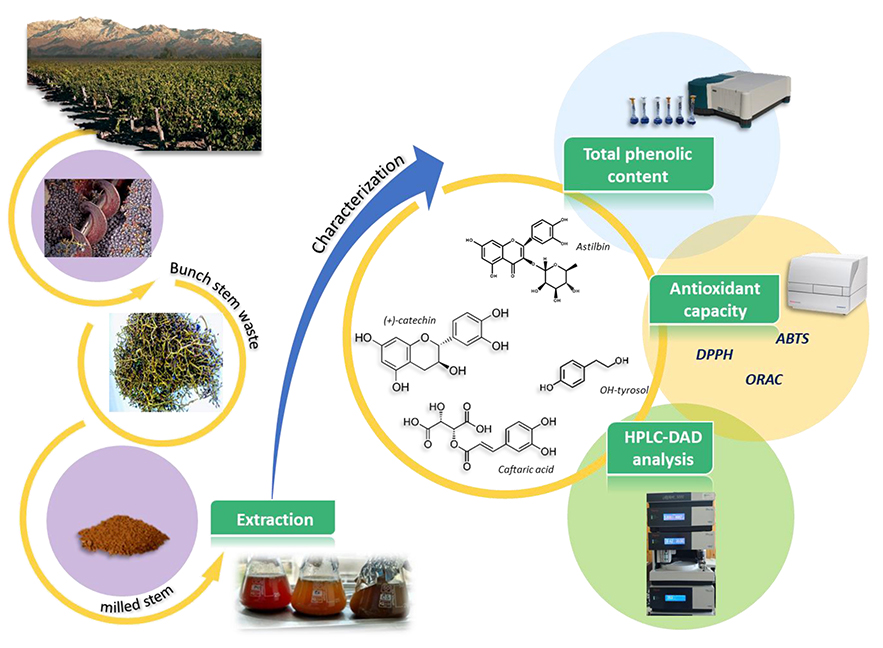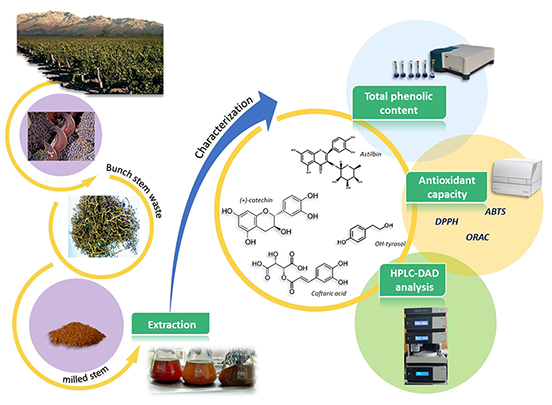Assessment of grapevine stems as source of phenolics with antioxidant properties
Palabras clave:
capacidad antioxidante, compuestos bioactivos, raquis de uva, subproductos industrialesResumen

Winemaking industry generates considerable amounts of bunch stems that are usually wasted despite their potential value as source of bioactive compounds. Phenolic profiles and antioxidant capacity (AC) of bunch stem extracts from eight grape varieties of Vitis vinifera L. were determined. Sixteen phenolic compounds (PC) were quantified by high performance-liquid chromatography-diode array detection (HPLC-DAD). The maximum concentrations corresponded to the flavanols (+)-catechin (6462 µg g-1 DW) and procyanidin B1 (1987 µg g-1 DW), followed by the hydroxycinnamic acid caftaric acid (2967 µg g-1 DW). Naringin, myricetin and OH-tyrosol were identified for the first time in grape bunch stems. Total phenolic content (TPC) of extracts, assessed as gallic acid equivalents (GAE), ranged between 47 and 125 mg GAE g-1 DW. The AC of extracts was appraised by ORAC, ABTS and DPPH assays, with a good correlation between TPC and AC when measured by ABTS and DPPH (r ≥ 0.92), while for ORAC the correlation was lower (r ≤ 0.41). Samples of cv. Malbec, the most representative variety of Argentina, presented the highest contents in PC, particularly flavanols. The results showed that grape bunch stems may be an inexpensive, sustainable and high value source of bioactive compounds as functional ingredients.
Highlights
-
Phenolic profiles and antioxidant capacity of bunch stem extracts from different varieties of Vitis vinifera L. are presented.
-
A total of 16 phenolic compounds (PC) were quantified by high performance-liquid chromatography-diode array detection.
-
Malbec, the most representative variety of Argentina, presented the highest contents of polyphenols PC, particularly flavanols.
-
Naringin, myricetin and OH-tyrosol were identified for the first time in grape bunch stems.
Descargas

Descargas
Publicado
Cómo citar
Número
Sección
Licencia
Aquellos autores/as que tengan publicaciones con esta revista, aceptan las Políticas Editoriales.










.jpg)




